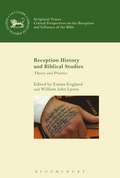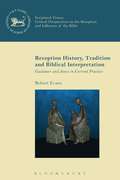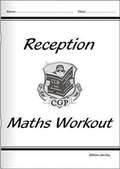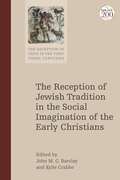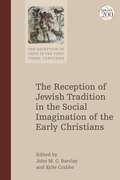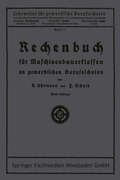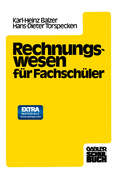- Table View
- List View
Reception A Extra Series: Go Away (PDF)
by Marlene GreenwoodThese six 8-paged books use all the letters of the alphabet except 'z'. nbsp; They introduce the high frequency words 'go, to, down, you, are, said, for' and the letter combinations 'qu' and 'ck'.
Reception A Extra Series: The Little Duck (PDF)
by Marlene GreenwoodThese six 8-paged books use all the letters of the alphabet except 'z'. nbsp; They introduce the high frequency words 'go, to, down, you, are, said, for' and the letter combinations 'qu' and 'ck'.
Reception A Extra Series: Hop ... Hop ... Hop (PDF)
by Marlene GreenwoodThese six 8-paged books use all the letters of the alphabet except 'z'. nbsp; They introduce the high frequency words 'go, to, down, you, are, said, for' and the letter combinations 'qu' and 'ck'.
Reception A Extra Series: The Big Hat (PDF)
by Marlene GreenwoodThese six 8-paged books use all the letters of the alphabet except 'z'. nbsp; They introduce the high frequency words 'go, to, down, you, are, said, for' and the letter combinations 'qu' and 'ck'.
Reception A Extra Series: The Big Pink Box (PDF)
by Marlene GreenwoodThese six 8-paged books use all the letters of the alphabet except 'z'. nbsp; They introduce the high frequency words 'go, to, down, you, are, said, for' and the letter combinations 'qu' and 'ck'.
Reception History and Biblical Studies: Theory and Practice (The Library of Hebrew Bible/Old Testament Studies)
by Emma England William John LyonsHow do we begin to carry out such a vast task-the examination of three millennia of diverse uses and influences of the biblical texts? Where can the interested scholar find information on methods and techniques applicable to the many and varied ways in which these have happened?Through a series of examples of reception history practitioners at work and of their reflections this volume sets the agenda for biblical reception, as it begins to chart the near-infinite series of complex interpretive 'events' that have been generated by the journey of the biblical texts down through the centuries. The chapters consider aspects as diverse as political and economic factors, cultural location, the discipline of Biblical Studies, and the impact of scholarly preconceptions, upon reception history. Topics covered include biblical figures and concepts, contemporary music, paintings, children's Bibles, and interpreters as diverse as Calvin, Lenin, and Nick Cave.
Reception History and Biblical Studies: Theory And Practice (The Library of Hebrew Bible/Old Testament Studies #611)
by William John Lyons Dr Emma EnglandHow do we begin to carry out such a vast task-the examination of three millennia of diverse uses and influences of the biblical texts? Where can the interested scholar find information on methods and techniques applicable to the many and varied ways in which these have happened?Through a series of examples of reception history practitioners at work and of their reflections this volume sets the agenda for biblical reception, as it begins to chart the near-infinite series of complex interpretive 'events' that have been generated by the journey of the biblical texts down through the centuries. The chapters consider aspects as diverse as political and economic factors, cultural location, the discipline of Biblical Studies, and the impact of scholarly preconceptions, upon reception history. Topics covered include biblical figures and concepts, contemporary music, paintings, children's Bibles, and interpreters as diverse as Calvin, Lenin, and Nick Cave.
Reception History, Tradition and Biblical Interpretation: Gadamer and Jauss in Current Practice (The Library of New Testament Studies #510)
by Robert EvansThis study seeks to make a contribution to current debates about the nature of Wirkungsgeschichte or reception history and its place in contemporary Biblical Studies. The author addresses three crucial questions: the relationship between reception history and historical-critical exegesis; the form of reception history itself, with a focus on the issue of which acts of reception are selected and valorized; and the role of tradition, pre-judgements and theology in relation to reception history. Disagreements about these matters contribute to what many characterise as the fragmentation of the discipline of biblical studies. The study champions the hermeneutics of Hans-Georg Gadamer as a theoretical resource for understanding biblical interpretation, and a way of holding together with integrity the varied activities undertaken within the discipline. Each aspect of the argument is illustrated, tested and further explored with reference to the post-history of exhortations in the New Testament to 'be subject'. These have been widely cited and applied for 2,000 years – in literature, law and politics as well as in theological traditions. In this way the study makes a contribution not just to the theory but also the practice of reception history.
Reception Maths Workout
by Cgp BooksThis Workout Book is packed with quick-fire practice Maths questions for children in Reception. Presented in a fun and friendly style, it’s a great way to help make sure they’re really got to grips with all the important skills they’ll need. What’s more, all the answers are included in a cut-out-and-keep section at the back of the book, so it’s simple to find out how well they’re progressing.
The Reception of Jewish Tradition in the Social Imagination of the Early Christians (The Reception of Jesus in the First Three Centuries)
by John M. G. Barclay, Kylie CrabbeThe contributors to this volume take as their theme the reception of Jewish traditions in early Christianity, and the ways in which the meaning of these traditions changed as they were put to work in new contexts and for new social ends. Special emphasis is placed on the internal variety and malleability of these traditions, which underwent continual processes of change within Judaism, and on reception as an active, strategic, and interested process. All the essays in this volume seek to bring out how acts of reception contribute to the social formation of early Christianity, in its social imagination (its speech and thought about itself) or in its social practices, or both. This volume challenges static notions of tradition and passive ideas of 'reception', stressing creativity and the significance of 'strong' readings of tradition. It thus complicates standard narratives of 'the parting of the ways' between 'Christianity' and 'Judaism', showing how even claims to continuity were bound to make the same different.
The Reception of Jewish Tradition in the Social Imagination of the Early Christians (The Reception of Jesus in the First Three Centuries)
The contributors to this volume take as their theme the reception of Jewish traditions in early Christianity, and the ways in which the meaning of these traditions changed as they were put to work in new contexts and for new social ends. Special emphasis is placed on the internal variety and malleability of these traditions, which underwent continual processes of change within Judaism, and on reception as an active, strategic, and interested process. All the essays in this volume seek to bring out how acts of reception contribute to the social formation of early Christianity, in its social imagination (its speech and thought about itself) or in its social practices, or both. This volume challenges static notions of tradition and passive ideas of 'reception', stressing creativity and the significance of 'strong' readings of tradition. It thus complicates standard narratives of 'the parting of the ways' between 'Christianity' and 'Judaism', showing how even claims to continuity were bound to make the same different.
The Reception Year in Action, revised and updated edition: A month-by-month guide to success in the classroom
by Anna Ephgrave‘The Reception Year in Action will take the understanding of outdoor play, teaching and learning to a new level. Everyone who is involved with early years education and care should read this book!’ Helen Bilton, University of Reading, UK ‘This is a fantastic book... it shows exactly how an excellent reception class is organised and run. There is a clear theoretical underpinning to the practice described and the photos really bring the text alive.’ Margaret Edgington, independent early years consultant and trainer Children thrive when a reception class is organised and managed by the adults, but led by the children. They learn and develop if they are in a stimulating environment which is carefully organised and when observations are used to support their ‘next steps’. They take risks and surpass expectations when they have clear routines and boundaries, combined with a supportive staff and an enabling environment. The Reception Year in Action offers a unique insight into the workings of a highly successful Reception class as it progresses through a complete academic year. The book covers all aspects of practice from the organisation of the classroom and garden and the rationale behind this to the routines and boundaries that ensure children are safe, happy and therefore able to explore and learn. It tracks the events of each month in the year, paying particular attention to the environment, the role of the adult, links with parents, children’s individual needs and the key areas of learning and development. At each stage Anna Ephgrave gives the reason behind each decision and shows what the outcomes have been for the children. This revised edition has been updated to show how the methods described complement the revised Early Years Foundation Stage Framework and how the planning system has been received under the new Ofsted framework. Key Features include: photocopiable pages of planning sheets, record keeping sheets, sample letters to parents and role play resources also available for download; over 150 full-colour photographs to illustrate practice; lists of resources and materials; examples of recorded observations and planning for next steps; guidance on what to look for when assessing children’s progress. Written by an advanced skills teacher who is gaining national recognition for her practice, this book provides teachers with the practical ideas and evidence of success to work with confidence in a way that is rewarding, manageable and, above all, best for the children.
The Reception Year in Action, revised and updated edition: A month-by-month guide to success in the classroom
by Anna Ephgrave‘The Reception Year in Action will take the understanding of outdoor play, teaching and learning to a new level. Everyone who is involved with early years education and care should read this book!’ Helen Bilton, University of Reading, UK ‘This is a fantastic book... it shows exactly how an excellent reception class is organised and run. There is a clear theoretical underpinning to the practice described and the photos really bring the text alive.’ Margaret Edgington, independent early years consultant and trainer Children thrive when a reception class is organised and managed by the adults, but led by the children. They learn and develop if they are in a stimulating environment which is carefully organised and when observations are used to support their ‘next steps’. They take risks and surpass expectations when they have clear routines and boundaries, combined with a supportive staff and an enabling environment. The Reception Year in Action offers a unique insight into the workings of a highly successful Reception class as it progresses through a complete academic year. The book covers all aspects of practice from the organisation of the classroom and garden and the rationale behind this to the routines and boundaries that ensure children are safe, happy and therefore able to explore and learn. It tracks the events of each month in the year, paying particular attention to the environment, the role of the adult, links with parents, children’s individual needs and the key areas of learning and development. At each stage Anna Ephgrave gives the reason behind each decision and shows what the outcomes have been for the children. This revised edition has been updated to show how the methods described complement the revised Early Years Foundation Stage Framework and how the planning system has been received under the new Ofsted framework. Key Features include: photocopiable pages of planning sheets, record keeping sheets, sample letters to parents and role play resources also available for download; over 150 full-colour photographs to illustrate practice; lists of resources and materials; examples of recorded observations and planning for next steps; guidance on what to look for when assessing children’s progress. Written by an advanced skills teacher who is gaining national recognition for her practice, this book provides teachers with the practical ideas and evidence of success to work with confidence in a way that is rewarding, manageable and, above all, best for the children.
Rechenbuch für Maschinenbauerklassen an gewerblichen Berufsschulen (Lehrmittel für gewerbliche Berufschulen)
by Uhrmann SchuthDieser Buchtitel ist Teil des Digitalisierungsprojekts Springer Book Archives mit Publikationen, die seit den Anfängen des Verlags von 1842 erschienen sind. Der Verlag stellt mit diesem Archiv Quellen für die historische wie auch die disziplingeschichtliche Forschung zur Verfügung, die jeweils im historischen Kontext betrachtet werden müssen. Dieser Titel erschien in der Zeit vor 1945 und wird daher in seiner zeittypischen politisch-ideologischen Ausrichtung vom Verlag nicht beworben.
Recherche 2.0: Finden und Weiterverarbeiten in Studium und Beruf
by Ragnar Müller Jürgen Plieninger Christian RappDiese Einführung unterscheidet sich von anderen, indem sie breit in die wissenschaftliche Internetrecherche einführt, das methodische Vorgehen und die Analyse der Ergebnisse eingehend behandelt und vor allem die Recherche in und mit Hilfe von Web 2.0-Diensten systematisch berücksichtigt. Dabei wird die Recherche als Teil des umfassenderen Ablaufs „Finden – Bewerten – Festhalten – Auf dem Laufenden bleiben” begriffen. Es werden also über die Recherche hinaus Werkzeuge vorgestellt, mit denen man die Ergebnisse festhalten kann (Notizbücher, soziale Bookmarkdienste und Literaturverwaltung) und es wird behandelt, wie man bezogen auf seine Themen und auf das Recherchieren selbst up to date bleibt. Ein Buch aus der Praxis für die Praxis: für Wissenschaftler, für Studierende und für jene, die bereits im Beruf sind und methodisch umfassend und effektiv das wissenschaftliche Recherchieren lernen wollen.
Rechnen lernen und Flexibilität entwickeln: Grundlagen – Förderung – Beispiele (Mathematik Primarstufe und Sekundarstufe I + II)
by Elisabeth Rathgeb-Schnierer Charlotte RechtsteinerDieser Band thematisiert vielseitig und aspektreich das flexible Rechnen in der Grundschule. Die Notwendigkeit der Förderung flexibler Rechenkompetenzen im Mathematikunterricht der Grundschule ist unumstritten und über die Zielrichtung des Mathematiklernens besteht Konsens: Kinder sollen bei der Ablösung des zählenden Rechnens begleitet und zum flexiblen Rechnen herausgefordert werden. Was bedeutet dies aber konkret? Was verstehen wir unter flexiblem Rechnen und wie kann flexibles Rechnen im Sinne eines kumulativen Aufbaus über die gesamte Grundschulzeit bei Kindern mit verschiedenen Lernvoraussetzungen gefördert werden? Diesen Fragen wird im Buch nachgegangen: Im Vordergrund steht dabei das Ziel, die Thematik einerseits theoretisch detailliert aufzuarbeiten, andererseits sie im Hinblick auf Unterricht zu konkretisieren. Die theoretische Aufarbeitung beschäftigt sich zunächst mit dem Prozess des Rechnens und darauf aufbauend allgemein mit Überlegungen zum Rechnenlernen und zur Entwicklung von Flexibilität. Die unterrichtspraktischen Aktivitäten im Rahmen der Zahlenblickschulung beziehen sich vorwiegend auf die Klassen 1 bis 3, da der Schwerpunkt des flexiblen Rechnens im Bereich des Zahlenrechnens im Zahlenraum bis 1000 liegt. Zielgruppen dieses Buches sind sowohl Studierende, Referendare und Referendarinnen als auch Lehrerinnen und Lehrer der Primarstufe.
Rechnungswesen, Controlling, Bankrechnen: Prüfungsaufgaben mit Lösungen (Prüfungstraining für Bankkaufleute)
by Wolfgang Grundmann Rudolf RathnerAnhand von prüfungsnahen Aufgaben mit kommentierten Lösungen wiederholt, festigt und ergänzt der Auszubildende die wirklich relevanten Lerninhalte, die ihn optimal auf die Abschlussprüfung vorbereiten. Die 3. Auflage wurde von einem neuen Autorenteam, Rudolf Rathner und Wolfgang Grundmann, aktualisiert, völlig neubearbeitet und im Rechenteil um zahlreiche Übungsaufgaben erweitert, u.a. im Rahmen des Themenkomplexes Bankrechnen auch um prüfungsrelevante Rechenaufgaben aus dem WiSo- und dem bankwirtschaftlichen Bereich, die besonders häufig Schwierigkeiten bereiten. Das Werk ist nun den aktuellen gesetzlichen Änderungen wie bspw. des aktuellen MwSt-Satzes von 19% oder der aktuellen Abschreibungssätze, Freibeträge etc. angepasst. Weiterhin sind ab dieser Auflage die Inhalte der Übersichtlichkeit halber grob nach Prüfungsgebieten zusammgefasst, sodass eine gezielte Vorbereitung auf auch für Sie vielleicht noch besonders heikle Themen möglich ist. + kostenlosem Online-Aktualisierungsservice
Rechoreographing Learning: Dance As a Way to Bridge the Mind-Body Divide in Education (Routledge Advances in Theatre & Performance Studies)
by Sandra Cerny MintonThis book addresses the mind-body dichotomy in movement and dance. This book includes a description of the often-forgotten kinesthetic sense, body awareness, somatic practices, body-based way of thinking, mental imagery, nonverbal communication, human empathy, and symbol systems, what occurs in the brain during learning, and why and how movement and dance should be part of school curricula. This exploration arguers that becoming more aware of bodily sensations serves as a basis for knowing, communicating, learning, and teaching through movement and dance. This book will be of great interest to scholars and students interested in teaching methodology and for courses in physical education, dance, and education.
Rechoreographing Learning: Dance As a Way to Bridge the Mind-Body Divide in Education (Routledge Advances in Theatre & Performance Studies)
by Sandra Cerny MintonThis book addresses the mind-body dichotomy in movement and dance. This book includes a description of the often-forgotten kinesthetic sense, body awareness, somatic practices, body-based way of thinking, mental imagery, nonverbal communication, human empathy, and symbol systems, what occurs in the brain during learning, and why and how movement and dance should be part of school curricula. This exploration arguers that becoming more aware of bodily sensations serves as a basis for knowing, communicating, learning, and teaching through movement and dance. This book will be of great interest to scholars and students interested in teaching methodology and for courses in physical education, dance, and education.
recht extrem? Dynamiken in zivilgesellschaftlichen Räumen
by Julian Sehmer Stephanie Simon Jennifer Ten Elsen Felix ThieleDer Band stellt sich der Herausforderung, Erkenntnisse zu Rechtsextremismus und -populismus über einen Zugang zu zivilgesellschaftlichen Räumen, Dynamiken und Akteur*innen zu erweitern und zu systematisieren. Dabei bietet der Band eine Einführung grundlegender Verständigungen zu den Themenkomplexen Zivilgesellschaft, Rechtsextremismus und Rechtspopulismus, um sich daran anschließend den Analysen von Dynamiken in einzelnen (zivil-)gesellschaftlichen Räumen, über diese hinweg und in Bezug auf Erziehung, Bildung und Soziale Arbeit zuzuwenden. Aus unterschiedlichen disziplinären Perspektiven (Politikwissenschaft, Erziehungswissenschaft, Soziale Arbeit, Soziologie, Sprachwissenschaften und Theologie) werden rechte Dynamiken, Narrative und Diskursverschiebungen analysiert und Gegenstrategien diskutiert.
Recht für Bankfachwirte: Erfolgreich durch die Prüfungen (Prüfungstraining zum Bankfachwirt)
by Ulrich Bente Henriette Deichmann Cordula Gürtler-BenteDas vorliegende Buch ermöglicht Ihnen die systematische Aneignung und Wiederholung des für Ihren Prüfungserfolg relevanten Stoffes. Zu diesem Zweck beinhaltet es aus den großen Bereichen des Bürgerlichen Rechts einschließlich des Kreditsicherungsrechts, sowie aus dem Handels- und Gesellschaftsrecht und dem Verfahrens- und Insolvenzrecht diejenigen Themen, die Sie für Ihre mündlichen und schriftlichen Prüfungen unbedingt wiederholen sollten.
Recht und Hochschulbegriff: Das juristische Feld und soziale Ungleichheiten im Prozess des Hochschulzugangs
by René AngelsteinRené Angelstein zeigt auf, inwieweit das Deutsche Hochschulrecht, konkret das Hochschulzugangs- und Hochschulzulassungsrecht, soziale Ungleichheit im Hochschulzugang wenn nicht verstärkt, so doch verstetigt. Er legt dar, dass das Recht mit der formalen Gleichbehandlung wesentliche klassenspezifische Momente ignoriert, welche soziale Ungleichheiten begründen. Als grundlegende gesellschaftstheoretische Reflexion zieht der Autor die Theorie von Pierre Bourdieu heran.
Rechtschreibung in der Grundschule: Eine empirische Untersuchung der Auswirkungen verschiedener Unterrichtsmethoden
by Tobias KuhlIm modernen Grundschulunterricht werden verschiedene Lehrmethoden eingesetzt, nach denen die Kinder lesen und schreiben lernen sollen. Bislang sind die Auswirkungen der unterschiedlichen Unterrichtsmethoden auf die Rechtschreibkompetenz und die Motivation zur Beschäftigung mit Schriftsprache nur unzureichend empirisch erforscht. Diese Lücke schließt Tobias Kuhl mit der vorliegenden Untersuchung. „Eine Studie zeigt die Überlegenheit des klassischen Orthografieunterrichts – wann dürfen unsere Kinder endlich wieder richtig schreiben lernen?“ DER SPIEGEL





